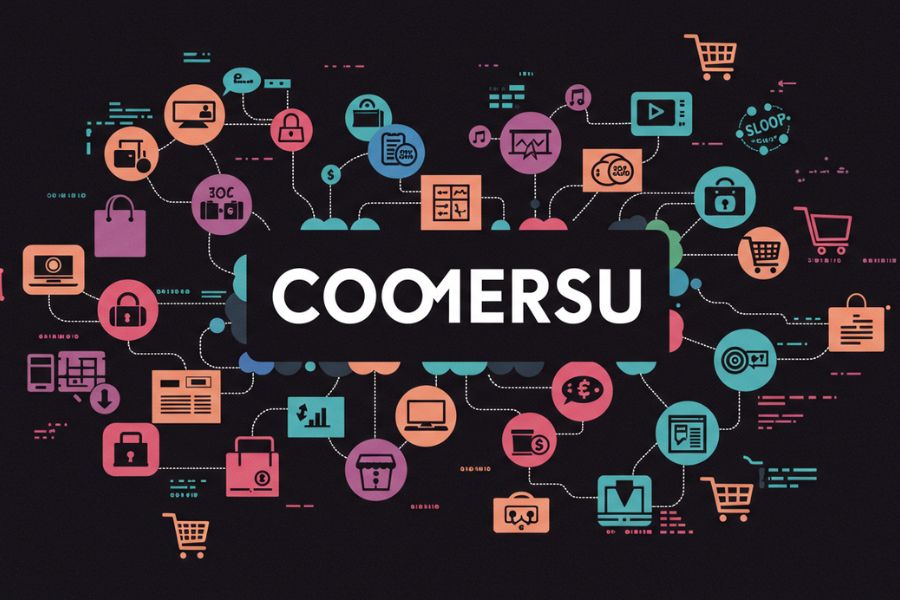The relentless churn of e-commerce innovation has birthed countless next big things, flash sales, one-click checkout, and algorithmic personalization. Yet beneath these incremental upgrades, a seismic shift in consumer expectations is brewing.
People don’t just want faster checkout lanes; they crave belonging, influence, and authentic connection. Let’s explain why this model isn’t just another trend but a fundamental reimagining of how brands and buyers interact.
What is the Coomersu Meaning?
At its core, Coomersu means fuses community and commerce. Unlike traditional marketplaces centered on isolated transactions, Coomersu platforms transform shopping into a collective journey.
For example, customers debating product designs in forums, voting on next-season features, or co-creating limited editions with brands. This isn’t hypothetical. Platforms like Etsy and Patreon hinted at this potential, but Coomersu codified it into a scalable architecture.
The driving insight? Modern shoppers reject passive consumption. They demand agency, to shape products, validate purchases through peer reviews, and feel invested in brands they support. A staggering 72% of consumers exhibit stronger loyalty to brands offering personalized, participatory experiences. Coomersu meets this by making the community the engine of commerce, not just a marketing garnish.
Why Legacy E-Commerce Is Stalling (And Where Coomersu Steps In)
Traditional online retail struggles with dwindling differentiators. Price wars erode margins. Algorithms feel invasive, not intuitive. Customer loyalty? Fragile at best. Consider these friction points:
- Static Experiences: Product pages with templated descriptions and generic reviews lack social proof depth.
- Innovation Blind Spots: Brands guess at market needs instead of leveraging real-time user insights.
- Transactional Relationships: Post-purchase engagement plummets, a missed opportunity for advocacy.
Commerce platforms attack these gaps head-on. They integrate collaborative spaces, forums, live co-design sessions, and UGC hubs, where customers don’t just buy but build. For example, outdoor gear brands might prototype hiking backpacks using direct trail-community feedback, slashing R&D cycles while forging die-hard adherents.
The Coomersu Tech Stack:
The magic isn’t just in having a community, it’s in how Coomersu technology orchestrates it. This isn’t Slack channels tacked onto a Shopify store. Its native functionality is designed for mass collaboration.
- Blockchain-Powered Transparency: Secure voting systems let users influence product roadmaps or sustainability initiatives. Every voice (and vote) is tamper-proof, fostering trust.
- AI Synthesis Engines: Instead of drowning in forum threads, AI distills customer ideas into actionable product tweaks, e.g., 37% of active users requested wider shoe widths.
- Social Shopping Integrations: Live-streamed product testing with real-time Q&A merges entertainment, social validation, and sales.
This tech transforms nebulous engagement into concrete R&D fuel. Brands like Glossier famously leveraged user input, but Coomersu systematizes it for any scale, from indie makers to enterprise retailers.
Tangible Returns: The Business Case No Brand Can Ignore
Skeptics might dismiss Coomersu as idealistic. The data suggests otherwise. When implemented strategically, community-centric models yield:
- 90%+ Retention Rates: Customers invested in product development rarely defect. They’re stakeholders, not shoppers.
- 30% Lower Marketing Costs: User-generated reviews/tutorials outperform polished ads. Peers trust peers.
- Faster Innovation Cycles: Trend spotting accelerates when your users are your trend lab.
- Case in point: Beauty brands using Commerce frameworks saw 2x faster concept-to-launch speed by beta-testing formulas with superuser groups pre-production.
Implementing Coomersu:
Launching a branded community isn’t without risk. Empty forums and ignored feedback breed cynicism. Avoid pitfalls with these tactics:
- Start Niche: Target micro-communities first (e.g., vegan runners, not athletic shoppers). Passionate niches drive intense co-creation.
- Reward Impact, Not Activity: Offer early access or royalties for ideas that ship, not just forum comments. Align incentives with outcomes.
- Tech-Enable, Don’t Replace: Use AI to summarize feedback, but human designers to execute. Automation should amplify humanity, not erase it.
The Horizon: Coomersu as E-Commerce’s Operating System
We’re entering commerce’s third wave. First was catalog digitization. Second was personalization. The third? Co-creation. With AR try-ons evolving into virtual co-design studios (imagine customizing sneaker colors in VR alongside influencers) and blockchain ensuring creator royalties, Coomersu technology shifts from differentiator to baseline.
Brands clinging to one-way transactions will fade. Those empowering communities to build with them won’t just capture market share, they’ll capture imagination and loyalty no algorithm can replicate. The future of e-commerce isn’t in your cart. It’s in your community.
Conclusion
The relentless pursuit of novelty in e-commerce often obscures truly transformative shifts. Comersu transcends buzzword status. It represents a fundamental architectural change, moving commerce from isolated transactions to interconnected, collaborative ecosystems.
